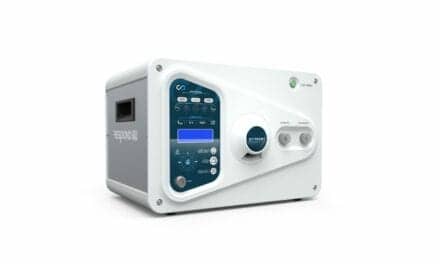Emergency intubations are almost always associated with cardiac or respiratory arrest in hospitalized patients and often occur during intense resuscitation activities.
Intubations in the hospital happen every day in the operating room to establish an airway and provide oxygenation and ventilation during a surgical procedure. These are nonemergent intubations under very controlled conditions. On the other hand, emergency intubations are almost always associated with cardiac or respiratory arrest in hospitalized patients (or in cases of impending cardiorespiratory failure) and often occur during intense resuscitation activities – a “code”. Depending on the size and type of the hospital, the time and location of the code, and the available staff, the emergency intubation may be accomplished by a physician (often emergency physician, anesthesiologist or pulmonologist), physician extender (nurse practitioner or physician assistant), or respiratory therapist.
This article will discuss aspects of emergency intubation, including the procedure itself, necessary equipment, special aids used to intubate, difficulties and risks, outcomes, and the role of RTs in performing intubation.
Emergency Intubation Procedure and Equipment
Once it is determined that a patient needs to be intubated, the right equipment should be obtained and prepared for the procedure while the patient is being ventilated/oxygenated – this involves bag-mask ventilation (BMV) with supplemental oxygen. Trained staff should be called to the bedside and the patient needs to be supine with the head slightly hyperextended in a “sniffing” position. The bed should be at a proper elevation to enable the person intubating to easily access the mouth from above the head of the bed during the intubation procedure.1
During a code there may or may not be time for a rapid sequence induction (RSI). RSI involves administration of an agent to bring about unconsciousness (induction) and another agent for neuromuscular blockade (paralysis). Etomidate is commonly used for induction and succinylcholine or rocuronium is commonly used for paralysis.2 Once the equipment is ready, the patient is properly positioned, well oxygenated and ventilated, and immediately after RSI (if used), the intubation procedure should proceed.
- Use the left hand to place the laryngoscope and blade into the correct position to visualize the vocal cords, epiglottis, and glottis. This involves a lifting motion (not a prying motion) to avoid damage to the patient’s teeth.
- Insert the tip of the ETT (and stylet) into the glottis and advance until the cuff has passed through and beyond the glottis.
- Stabilize the tube by holding it in place until secured. Remove the stylet and attach the CO2 detector to the ETT. Inflate the cuff. Remove the mask from the resuscitator bag and ventilate through the CO2 The presence of exhaled CO2 is often the second confirmation that the tube is properly placed in the trachea. (A calorimetric capnometer will change color from purple to yellow with CO2 exposure). The first confirmation is actually seeing the ETT pass through the glottis and into the trachea.
- Verify ETT placement by confirming equal, bilateral breath sounds, equal chest rise with bagging with negative “breath” sounds over the epigastric region, condensation in the ETT connector with exhalation, and depth of tube at about 22-24 cm at the corner of the lip. If the ETT is too deep it tends to enter the right mainstem bronchus. Breath sounds will be absent on the left and the chest rise will be unilateral. If this happens, retract the ETT slowly and continue bagging until correct placement is reached.
- Secure the tube with tape or a commercial tube holder. Obtain a chest radiograph to verify proper tube placement.
Many respiratory departments maintain airway or intubation boxes that contain all the necessary equipment to perform an intubation (this may be a fishing tackle box or tool box). See Figure 1 for the Basic Intubation Equipment needed for an airway box.
The equipment should be assembled and checked for proper function and suction set-up if not already present. After use the airway box should be carefully checked and restocked to be ready for use in the future. Also – there are several companies who provide airway kits commercially.
Most hospitals have special devices or equipment to assist in a difficult airway situation. This may include lighted stylets, fiberoptic stylets, flexible fiberoptic laryngoscopes or video laryngoscopes. The cost of these special devices may influence how many are in-house and access may be limited but they are valuable in those cases where direct line-of-sight intubation is difficult or impossible to achieve using a regular laryngoscope and blade. Laryngeal mask airways (LMA) and/or esophageal tracheal double-lumen airways provide alternate approaches to endotracheal intubation and may be used for a temporary airway.3, 4
Difficulties, Risks, and Outcomes
Assessment of a patient prior to intubation may reveal the potential for the difficult airway. Unfortunately, in an emergency situation a complete assessment prior to intubation may not be possible due to the circumstances. A helpful mnemonic has been developed to assist in rapid identification of adult patients who may be hard to intubate (this has not been tested in children).
The mnemonic is LEMON:4
- L – Look for clues that point to potential difficulties. This may include issues such as facial abnormalities or burns, neck masses
- E – Evaluate the mouth opening, thyromental distance (from the tip of the chin to the top edge of the thyroid cartilage with the head fully extended) and the distance between the mandible and the thyroid cartilage.
- M – Mallampati score: this is a score from Class I to IV given with the mouth wide open and the tongue extended. Class I has the soft palate and uvula fully visible up to Class IV where the soft palate and uvula are not visible at all.
- O – Obstruction in the upper airway: signs include stridor, muffled voice, difficulty handling secretions.
- N – Neck mobility: limited neck mobility can result from congenital anomalies or cervical spine immobilization
Certain patient characteristics can give clues that the intubation may be challenging. These include obesity, age, obstructive sleep apnea, a history of snoring, acquired or congenital disease states (such as ankylosis, degenerative osteoarthritis, subglottic stenosis, thyroid or tonsillar hypertrophy, or Down syndrome) and a history of previous difficulty in intubating the patient.3
Many published research articles use the number of attempts to evaluate intubation success and discuss the issues associated with three or more attempts (increased risk of hypoxemia, regurgitation and aspiration, airway trauma, bradycardia, and esophageal intubation). In addition, complications of intubation include trauma to teeth, right mainstem bronchus intubation, vocal cord damage, and infection.1
The American Society of Anesthesiologists recommend limiting intubation attempts by conventional means to three then changing over to an alternative technique (such as the LMA or esophageal tracheal double-lumen airways) or utilizing the special devices mentioned earlier to assist in intubation.3,5
In a study5 of emergency intubations in patients 16 years old or older that occurred over almost 10 years (late-1990 to mid-2000) at one tertiary care level-1 trauma center in the Northeast, a total of 2,833 conventional intubations were reviewed. 68% of the intubations were successful on the first attempt while 10% required 3 or more attempts.5 One study from the National Emergency Airway Registry (NEAR) reviewed 19,629 cases over almost 10 years (Mid-2002 to end of 2012) and found successful intubation on first attempt to occur 83% of the time with 99% success at three or fewer attempts. Esophageal intubation was the most common adverse event followed by hypotension.2
Respiratory Therapist Role in Intubation
Respiratory therapists (RTs) receive training in endotracheal intubation in order to assist a physician in the procedure and in some instances the RT is the one who performs the intubation. A NEAR study that examined the use of telemedicine to assist in rural emergency department intubations over a 1-year period (2014-2015) found that RTs performed intubation in nine out of 206 cases (4.3%) with six cases done without telemedicine support and three with the support. Most of these facilities were critical access hospitals in the upper Midwest.6
RTs at Duke University Health Systems have had an average of 845 intubations a year and have been doing this procedure for over 40 years. In a one year review of intubations (1990-1991) a total of 833 intubations were performed. 791 of these were done by RTs; 42 by physicians. The RT department at Duke has a formal training curriculum that prepares the staff for advanced airway management and has ongoing competencies in place to document and maintain their skills. Through the mid to late 90’s a review of airway management at Duke showed that between 31% to 44% of the RT department staff had >10 ETT intubations performed in a year to maintain their competency and help their patients by establishing the airway.7
A 2017 article published in Respiratory Care examined the training and skill maintenance for RTs and a survey performed to research this topic showed that some 50% of the respondents were working at institutions where RTs performed intubation.8
Conclusion
Emergency intubations are high-stress procedures and call for trained, competent staff and proper equipment to allow for successful placement of an artificial airway with a minimum number of attempts and reduction of risk, complications, and adverse events. Alternative means of providing oxygenation and ventilation are needed in those cases where there may be difficulty placing an ETT.
With the growth in using video assistance for the procedure the success rates have increased, lower number of attempts are needed, and there has been an increase in use of telemedicine tools to aid in establishing the airway. Respiratory therapists receive training to assist or to perform intubation and may see an increase in this role as healthcare continues to evolve. RT
Bill Pruitt, MBA, RRT, CPFT, AE-C, FAARC, is a senior instructor and director of clinical education in the department of Cardiorespiratory Sciences, College of Allied Health Sciences, at the University of South Alabama in Mobile.
References
- White, G. (2013) Emergency Airway Management. Basic Clinical Competencies for Respiratory Care: An Integrated Approach, 5th ed. Ch 20.
- Brown III CA, Bair AE, Pallin DJ, Walls RM, NEAR III Investigators. Techniques, success, and adverse events of emergency department adult intubations. Annals of emergency medicine. 2015 Apr 1;65(4):363-70.
- Apfelbaum JL, Hagberg CA, Caplan RA, Blitt CD, Connis RT, et al. Practice guidelines for management of the difficult airway: An updated report by the American Society of Anesthesiologists task force on management of the difficult airway. Anesthesiology: The Journal of the American Society of Anesthesiologists. 2013 Feb 1;118(2):251-70.
- From the Up-To-Date website on The Difficult Pediatric Airway: https://www.uptodate.com/contents/the-difficult-pediatric-airway?topicRef=269&source=see_link.
- Mort TC. Emergency tracheal intubation: complications associated with repeated laryngoscopic attempts. Anesthesia & Analgesia. 2004 Aug 1;99(2):607-13.
- Van Oeveren L, Donner J, Fantegrossi A, Mohr NM, Brown III CA. Telemedicine-assisted intubation in rural emergency departments: A National Emergency Airway Registry Study. Telemedicine and e-Health. 2017 Apr 1;23(4):290-7.
- Thalman JJ. Airway management by respiratory therapists. Clinical Pulmonary Medicine. 2001 Jan 1;8(1):22-32.
- Miller AG. Endotracheal intubation training and skill maintenance for respiratory therapists. Respiratory care. 2017 Feb 1;62(2):156-62.











